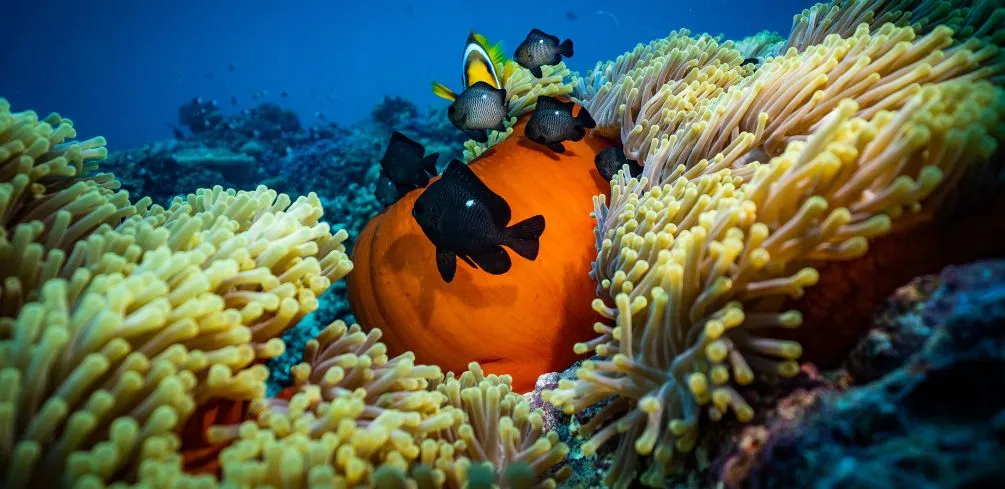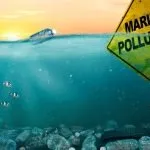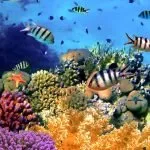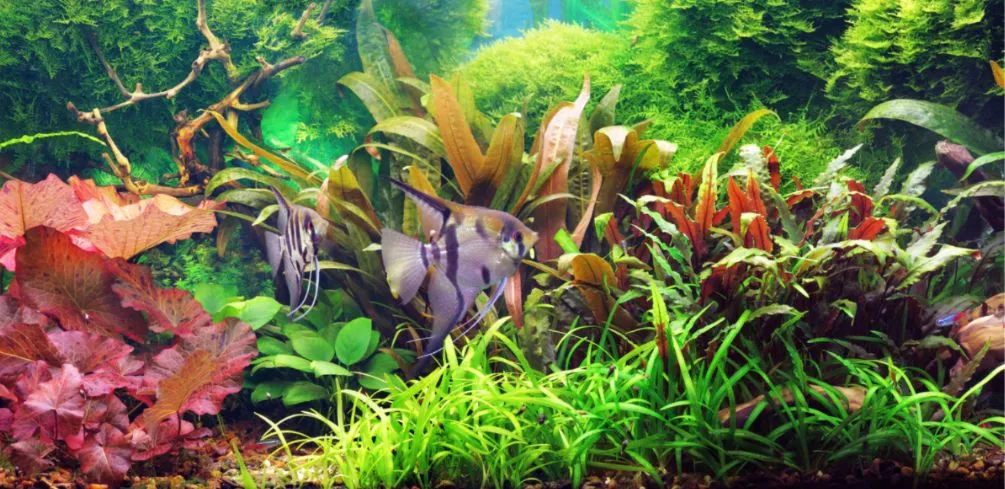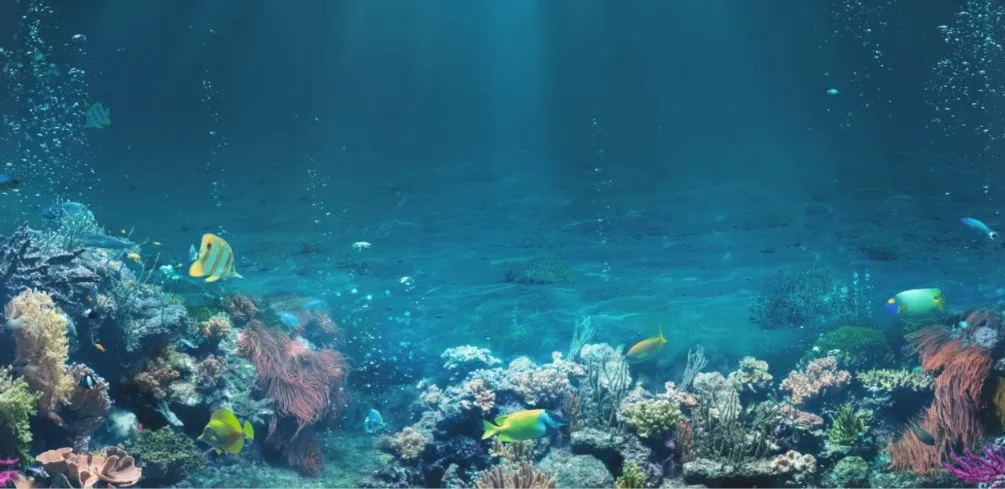It’s no secret that coral reefs are an incredibly important part of our planet’s ecosystem. They provide a habitat for countless species of marine life, and their beauty is unparalleled. Unfortunately, these fragile systems are being threatened by human activities, and it’s up to us to do what we can to preserve them. In this article, I’ll be exploring the importance of preserving coral reefs and why it’s essential to protect them for future generations.
When you imagine coral reefs, you might conjure up images of vibrant colors, exotic fish, and crystal-clear waters. But did you know that these beautiful environments also play a vital role in sustaining the ocean’s food chains?
Coral reefs act as nurseries for young fish and provide shelter from predators. Additionally, they act as natural barriers against storms and waves that would otherwise erode shorelines. This makes them essential for coastal communities around the world that rely on healthy seaside habitats for their livelihoods.
The destruction of coral reefs can have devastating effects not only on sea creatures but on humans too. Pollution from agricultural runoff leaches into the water and destroys corals through eutrophication – when too many nutrients fuel algae growth that smothers the corals below.
Unfortunately, this is just one example of how human activity is causing irreparable damage to our oceans’ delicate ecosystems. It’s up to all of us to do our part in preserving these precious habitats before it’s too late!
Overview Of Coral Reefs
Coral reefs are some of the most diverse and beautiful ecosystems in the world. They cover just 0.2 percent of the ocean floor, yet they’re home to 25 percent of all marine life. These reefs consist of colonies of tiny animals called polyps that live in a symbiotic relationship with algae and secrete a hard calcium carbonate skeleton for protection. The structure created by these polyps is what makes up the reef.
The ecology of coral reefs is incredibly complex and involves many species interacting with each other and their environment. Corals provide food, habitat, protection, and spawning grounds for fish, invertebrates, crustaceans, and other organisms. This creates a unique food web within the reef system which is important to maintain balance in its environment.
Coral reefs are also essential to human health as they protect coastlines from storms, waves, and floods while providing valuable resources such as medicine, food, and tourism income. Coral reefs are also vital to our planet’s climate regulation as they absorb large amounts of carbon dioxide from the atmosphere.
Unfortunately, coral reefs are under threat due to climate change, pollution, overfishing, and other human activities. To protect these fragile ecosystems, it’s important that we recognize their importance and take steps to conserve them for future generations.
Threats To Coral Reefs
The plight of our precious coral reefs is perilous, threatened by numerous dangers. Pollutants, overfishing, ocean acidification, and coastal development all pose a threat to the delicate balance of life that exists in coral reefs. With such looming risks, it is vital that we take steps to preserve these diverse and complex ecosystems for future generations.
Five Major Threats to Coral Reefs Include:
- Pollution: Fertilizers and other pollutants can cause an increase of nutrients in the water, which leads to algal blooms that block out sunlight from reaching coral polyps and suffocate them. Water pollution has also been linked to coral bleaching as chemicals and toxins weaken their immune system making them vulnerable to disease.
- Overfishing: When species like parrotfish are removed from their natural habitats, it can have a devastating effect on the overall health of coral reefs. Parrotfish play an important role in keeping algae growth in check, which otherwise would smother corals and stunt their growth.
- Ocean Acidification: The increasing levels of carbon dioxide emissions are slowly making our oceans more acidic, reducing the amount of calcium carbonate available for corals to build their skeletons with, which makes them vulnerable to erosion caused by strong waves or storms.
- Coastal Development: Building structures such as ports or dams along coastlines can reduce the amount of sediment that flows into the ocean, which leads to fewer nutrients being available for corals. It also reduces the quality of light reaching them and increases turbidity in the water, which makes it harder for corals to survive long-term.
- Coral Bleaching: Stressful environmental conditions such as changes in temperature caused by climate change can cause corals to expel symbiotic algae living inside them, resulting in bleaching events where they lose their vibrant colors and become structurally weak, leading to death if not given enough time to recover.
It is clear that humans have had a major impact on coral reefs worldwide; however, there is still hope if we act now before it’s too late! Conservation efforts must be made at both local and global levels if we wish to protect these fragile ecosystems for future generations.
Economic Benefits Of Conservation
The economic value of coral reef conservation is immense. Benefits can be seen throughout a variety of industries, from tourism to environmental protection. A benefit analysis of coral reef conservation reveals that the potential gains are incredibly beneficial for both individuals and the global community.
For starters, coral reefs play a major role in the tourism industry. They provide countless opportunities for recreational activities, such as scuba diving and snorkeling, which can bring in significant amounts of money to local economies.
In addition, coral reefs also help protect coastlines from strong currents and storms – meaning that any losses due to climate change will have an even bigger impact on shoreline communities if the reefs aren’t properly protected.
Finally, conserving coral reefs can also have positive effects on environmental protection efforts. Healthy reefs act as natural filters in our oceans – providing habitats for fish, reducing ocean acidity levels, and absorbing carbon dioxide from the atmosphere. All of these factors are essential for maintaining a healthy environment and a stable climate system.
Clearly, there is much evidence to support the idea that preserving coral reefs is an important endeavor with massive economic implications. Such conservation efforts will not only contribute to healthier marine ecosystems but also bring financial gains to local businesses and communities around the world.
Ecological Benefits Of Conservation
Having discussed the economic benefits of conservation, let’s take a look at the many ecological benefits. The protection of coral reefs is essential for maintaining ecological diversity and supporting marine ecosystems. Coral reefs provide an important habitat for a variety of organisms, making them critical to species abundance.
Studies have shown that coral reefs account for more than 25% of all marine life in the ocean while occupying less than 1% of the seafloor. This makes their preservation essential for maintaining a healthy ocean environment.
Coral reefs also play an important role in climate regulation. For example, they store carbon dioxide from the atmosphere, helping reduce greenhouse gases and global warming. Furthermore, coral reefs act as natural barriers against storms and floods, protecting coastlines from damage.
When these natural barriers are destroyed by pollution or overfishing, coastal areas become vulnerable to extreme weather events such as hurricanes and typhoons.
Finally, coral reefs are important sources of food and medicine for people living near coasts or on islands. It is estimated that millions rely on reef fish for their primary source of protein and income. Therefore preserving coral reefs is necessary not only to maintain a healthy ocean environment but also to protect human livelihoods as well as the thousands of species that inhabit these unique underwater habitats.
How To Help Protect Coral Reefs
It’s easy to feel powerless when it comes to protecting coral reefs, but there are actions we can all take. Whether you’re on a beach vacation or in your own backyard, there are simple ways to help protect these vital systems.
The first step is understanding the importance of coral reef conservation and the consequences of not protecting them. Educating yourself and others about their significance can inspire action and create awareness.
As a global community, we must also work together to reduce human impacts that damage coral reef ecosystems. This includes reducing pollution, limiting overfishing, avoiding contact with corals, and minimizing coastal developments near reefs.
We can also support organizations dedicated to coral reef protection and restoration projects. Supporting these efforts can make a big difference in restoring damaged reefs and helping prevent future destruction. As individuals, we can connect with our local communities by volunteering at beach cleanups or participating in other conservation initiatives centered around coral reef preservation.
From educating others about the importance of protecting our oceans to getting involved in local conservation efforts, taking action is an important part of preserving coral reefs for future generations. By doing our part now, we can make sure these beautiful habitats remain healthy for years to come.
Frequently Asked Questions
How Much Of The World’s Ocean Is Coral Reef?
Have you ever wondered how much of the world’s ocean is comprised of coral reefs? It may come as a surprise to learn that coral reefs make up less than 1% of the total ocean coverage. Despite this, they still play a vital role in sustaining life on Earth. This article will discuss the estimated percentage of coral reefs in the ocean and how it affects our planet.
The estimated percentage of coral reefs in the ocean is significant but not as high as one might expect. According to scientific research, only about 0.17% of the entire ocean area is covered by coral reefs. This is an astonishingly small number considering how vital they are to marine life and ecosystems around the world.
However, even though coral reefs cover such a small area of the ocean, their impact on our planet is immense. Coral reefs provide habitats for millions of species and promote biodiversity. They also act as natural barriers against storms and other extreme weather conditions. Furthermore, they help maintain water clarity and reduce coastal erosion by trapping sediment and absorbing wave energy. All these benefits show us why it is so important to preserve these delicate ecosystems.
From this information, we can see that while coral reefs take up only a tiny fraction of the total ocean coverage, their impact on our planet cannot be underestimated. Their importance in sustaining life on Earth makes them invaluable and should spur us into action to ensure their survival for future generations.
What Are The Main Causes Of Coral Reef Destruction?
What are the main causes of coral reef destruction? This is a pressing question that needs an answer so we can better protect our precious coral reefs. Unfortunately, there are many human-caused threats to coral reefs, ranging from coral bleaching to overfishing and pollution. Let’s take a closer look at each of these factors.
Coral bleaching is one of the most devastating threats to coral reefs. It occurs when extreme temperatures caused by climate change cause corals to expel the symbiotic algae living in their tissues, turning them white. Without this algae, the coral will eventually die as it loses its primary food source and becomes more susceptible to diseases.
Overfishing is another threat that can have a significant impact on coral reefs. When too many fish are removed from an ecosystem, it disrupts the natural balance of flora and fauna in the reef and can lead to other negative impacts, such as increased nutrient pollution and algal blooms, which can block sunlight and smother corals.
Pollution from coastal development can also contribute to this problem by introducing excess nutrients into the water, which can cause algal blooms and reduce oxygen levels in the water, both of which can be harmful to corals.
Lastly, climate change has become one of the biggest drivers of global warming and ocean acidification, two processes that can have a dramatic effect on coral reefs. Warmer oceans increase water temperatures leading to more frequent bouts of coral bleaching while acidification decreases calcium carbonate levels needed for corals to build their skeletons meaning they weaken over time.
It’s clear that there are many human-caused threats that need to be addressed if we want to save our precious coral reefs before it’s too late! If we take action now by reducing our reliance on fossil fuels, limiting overfishing practices, and increasing conservation efforts, then we stand a chance of preserving these amazing habitats for future generations.
What Are The Economic Costs Of Coral Reef Destruction?
Did you know that the global economic cost of coral reef destruction is estimated to be between $10 billion and $100 billion annually? That’s a huge amount of money, and it shows just how much damage can be caused when coral reefs are lost. But what exactly are these economic costs, and why are they so high?
To start with, when a coral reef is damaged or destroyed, there is an immediate financial cost associated with the loss. This includes damage to businesses that rely on the services provided by the reef – such as fishing and tourism – as well as any costs incurred in trying to repair or restore the reef. In addition to this, there are also long-term losses related to the ecosystem services provided by healthy coral reefs, which can have an even greater impact on local economies.
These long-term losses include things like decreased coastal protection from storms and erosion, reduced fish stocks due to overfishing, decreased water quality due to runoff from land-based sources, and even reduced carbon storage capacity caused by degraded corals.
All of these factors have a direct economic impact on those who depend on these resources for their livelihoods. Furthermore, there are also indirect economic costs associated with coral reef destruction, such as increased healthcare costs due to contaminated seafood or declines in tourism revenues due to beach erosion.
Clearly, the economic costs of coral reef destruction can be significant both in terms of immediate losses as well as long-term impacts on local economies. This makes conserving and protecting our remaining coral reefs all the more important if we want to avoid further damaging our planet’s invaluable natural assets.
How Long Does It Take For A Coral Reef To Recover From Damage?
It’s important to understand how long it takes for a coral reef to recover from damage. This is especially true as environmental damage and economic costs continue to rise due to the destruction of coral reefs.
The recovery time of a coral reef can vary depending on the extent of the damage, but it can take decades or even centuries for a full recovery. Factors such as water temperature, amount of available nutrients in the water, and pollution levels all play a role in determining how quickly a coral reef can recover.
There are many efforts underway to help protect and restore coral reefs so that they can more quickly recover from damage. These efforts include habitat restoration, conservation efforts, and monitoring programs that help identify potential threats before they become too serious. Additionally, regulations have been put into place to limit human activity, which could lead to coral reef destruction.
Here are some key points about coral reef recovery:
- It may take decades or even centuries for a full recovery to occur.
- Factors such as water temperature, nutrient levels, and pollution all affect how quickly a reef will recover.
- Efforts like habitat restoration, conservation initiatives, and monitoring programs can help speed up the process.
- Regulations have been put into place in order to limit activities that could harm reefs and further delay their recovery time.
Coral reefs are fragile ecosystems that need our protection in order to survive and thrive – understanding their recovery time is essential if we want them to remain healthy for future generations. It’s up to us to ensure that our actions don’t cause further destruction and impede their rehabilitation process – only then will we be able to enjoy these incredible underwater habitats for years to come!
What Are The Most Effective Ways To Protect Coral Reefs?
Protecting coral reefs is an important step in preserving our marine ecosystems. But what are the most effective ways to protect them? In this article, I will discuss coral reef conservation, restoration initiatives, marine protected areas, reef-friendly fishing, and water pollution prevention as some of the most effective methods for protecting coral reefs.
Coral reef conservation is one of the most important steps when it comes to protecting these fragile ecosystems. This involves activities like reducing or eliminating destructive fishing practices, limiting human disturbance to the habitat, and increasing public awareness.
Restoration initiatives can also be beneficial in helping coral reefs recover from damage. These include methods such as planting new corals or transplanting existing ones to locations where they can thrive and grow.
Marine protected areas are also essential for keeping coral reefs healthy. These areas provide a safe habitat for fish and other marine species, which helps maintain balance in the ecosystem. Reef-friendly fishing is another way to protect these habitats while still allowing people to make a living from fishing.
This involves using gear that won’t damage the reef and only catching enough fish for personal use or sale on a sustainable basis. Lastly, preventing water pollution is key when it comes to protecting these delicate environments from toxins and other pollutants that could harm them.
These strategies are all essential for preserving our precious coral reefs and ensuring their long-term survival. By taking action now, we can help ensure that future generations have access to these unique habitats for years to come!
Conclusion
We have seen that coral reefs are an important part of the world’s oceans and that they are under threat from a variety of sources. We have also discussed the economic costs associated with coral reef destruction and how long it might take for a reef to recover. With all this in mind, it is essential that we take steps now to protect these vital ecosystems.
My hope is that by understanding more about the importance of coral reefs, we can find ways to reduce their destruction and ensure their continued existence. It is up to each one of us to make sure that our actions do not further damage these delicate environments. Through education, awareness-raising, and concerted action, we can help safeguard the future of coral reefs around the world.
Let us work together to preserve this valuable resource for generations to come. By taking action now, we can ensure that coral reefs remain a vibrant part of our planet’s ecosystem for years to come.
